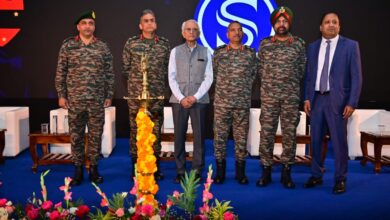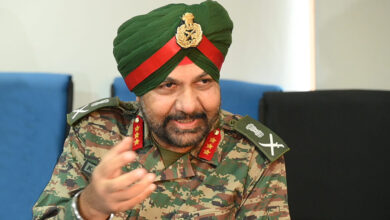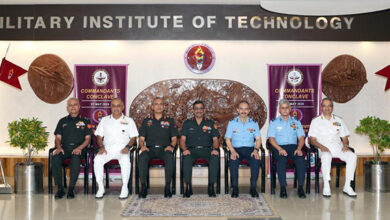Cheetah/Chetak Replacement – Unending Saga
New Delhi. The modernisation and transformation plans of the Army Aviation Corps, the youngest and the most potent arm of the Army continues to flounder, especially the programme of the Cheetah/Chetak helicopter replacement. The Corps faced a major setback , when arguably the most important – nay critical – project for acquisition of 197 Reconnaissance and Surveillance Helicopters (RSH), to replace the current, obsolescent HAL Chetak / Cheetah fleet was cancelled by the Ministry of Defence (MoD) in August 2014. The adverse fallout of this decision has been that the Army remains bereft of a suitable helicopter to replace its ageing Cheetah / Chetak fleet which is seriously impacting on the overall operational capability, especially in high altitude areas – the Cheetah helicopter virtually remains the lifeline of troops deployed in Siachen.
While the Government to Government agreement in Jan this year between India and Russia to acquire 200 Ka-226T, Kamov helicopters is a welcome step, but it may take anything from 3-4 years before the project actually fructifies. This estimate is based on the experience of how the Rafael and the M777 Howitzer projects are slumbering along with no end in sight so far – this despite the involvement at the highest level of the Government. To make matters worse the DPP 2016 released with much fanfare this year during the Def-Expo is not effective, as the issue of selection of Strategic Partners from the Industry is still under review. Hence no Mega Defence Projects can move forward till a DPP which is fully implementable is released.
The Indian Army’s Aviation Corps is now in its 30th year of existence, since its establishment in November 1986. Its inventory comprises the largest number of helicopters amongst the three Services (about 300 plus), with the major part of its fleet consisting of reconnaissance and observation class helicopters (some 200 plus Chetak and Cheetah helicopters). However, this fleet is now old and vintage and has been awaiting replacement for well over a decade. These HAL-built helicopters have remained the mainstay of the armed forces for the last four decades and form a crucial component of the Army and their replacement has been accorded the highest priority in the overall transformation and modernisation plans of the Army. Because of the nature of terrain along India’s Eastern and Northern borders, particularly the Siachen Glacier, (highest battlefield in the world) such class of helicopters are critical to maintain defence preparedness and operational readiness. The Cheetah helicopter is the last bastion for formations and troops deployed in these formidable areas, but unfortunately they are of outdated technology – India’s armed forces, with its Army being the third largest in the world, deserve far better.
The Saga of Unending Trials
First evaluation trials for replacement of the Cheetah and Chetak helicopters fleet took place during 2005-2006, with Eurocopter’s (now Airbus Helicopters) AS 550 C3 Fennec and Bell Company’s Bell 407 in competition. Russia’s Ka-226T was also a contender but did not proceed beyond the technical evaluation, due to its engines not being certified at that time – the Ka-226T was fitted with Russian engines and not the Turbomeca engines they are fitted with today. However, in December 2007, while at the final stage of price negotiation, the entire evaluation process was cancelled by the MoD owing to extraneous reasons, which were for many “beyond comprehensionâ€. The acquisition plan was for 197 helicopters essentially for the army with the transfer of technology clause built in.
A fresh tender was issued in July 2008 for acquisition of 197 helicopters (RSH) for the army and air force (137 and 60 respectively). Trial evaluations for these was concluded more than three years back, this time the competing types being the Eurocopter AS 550 C3 Fennec and Russian Kamov Ka-226T helicopter. The third contender, Augusta Westland’s AW-119 was removed midway during the trials owing to a technical mismatch in nomenclature of its engine. However, as stated earlier, this crucial RSH procurement process has since been cancelled.
A fresh RFI was issued (published on 31 October 2014), in a ‘Buy-and-Make-India’ approach with a certain number of helicopters to be supplied by the selected OEM in flyaway condition, with the remaining numbers to be built at a production facility in India, by an Indian partner through licensed transfer of technology. Essentially, this RFI envisaged identification of probable Indian Vendors (private or public), including those who would form Joint Ventures (JVs) and establish production arrangements with an OEM so as to provide the helicopters, followed by licensed production in the country. This generated much interest, and was key topic of speculation during Aero India 2015. While this was a welcome step and the actions taken by the Government demonstrated its concerns, the entire process was expected to take at least another three years, provided everything moved smoothly with no further hitches or glitches. The final nail in the coffin has been the recent clearance by the Government for 200 Russian Ka-226T helicopters as a ‘Make in India’ project This has left the fate of the 197 RSH project hanging in balance with no clarity from the Government – while the RSH project has not been cancelled, total confusion reign’s in the industry and the armed forces regarding the future of the RSH programme. With the current dismal state of the Chetak and Cheetah fleet and serious maintenance and safety concerns, the writing is clearly on the wall. There is understandable disquiet on this matter within India’s military aviation fraternity which needs to be taken serious note of, as this gravely impinges on operations in high altitude areas.
Present Status and Implications
The existing Cheetah and Chetak helicopters are difficult to service and maintain, with the spares situation becoming critical. Without mincing words, maintenance of this fleet is becoming ‘a nightmare’ as HAL is finding it increasingly difficult to keep this fleet serviceable and safely airborne – the armed forces have repeatedly expressed their concerns on safety. The Cheetal helicopter developed by HAL, both for the army and air force, is a ‘stop gap’ measure is not a satisfactory solution, as this is essentially a Cheetah airframe with a more powerful engine, the basic technology remaining the same. HAL has long stopped production of Cheetah and Chetak helicopters and is presently focusing on the Cheetal to make up current shortfalls of the fleet. As an interim measurethe Army has placed an order for 20 Cheetal’s to meet its urgent and critical requirements for high altitude areas. The Airforce is also in the process of acquiring 10 Cheetal’s.
For the future, HAL has embarked on its Light Utility Helicopter (LUH) project of the 3-tonne light observation category and hopes to field this by 2017. In fact HAL has been set a target of manufacturing 187 LUH within the total requirement of 400 plus helicopters of this class required for the Army and Air Force. HAL already has its hands full with the manufacture of the Dhruv ALH and the Rudra ( armed ALH) – the ALH though continues to face problems in operations and maintenance, especially in high altitude. The Army reportedly has a poor serviceability of the ALH and is most affected being the largest holder and operator (some 70-80 helicopters) of this class – the problems are likely to accentuate with its the fleet inventory increasing every year. In addition, HAL is also in the process of achieving initial operational clearance (IOC) of the Light Combat Helicopter (LCH) by the end of this year, designed for operating at high altitudes. This is a very critical project as it is expected to be the first modern attack helicopter capable of operating in high altitudes and best suited to Indian operational conditions. With India’s private sector also having entered the helicopter manufacturing market, JVs are expected to be established with some major helicopter companies to include Sikorsky, Bell, Airbus Helicopters and Kamov once the strategic partner issue is finalized. With the competition becoming acute, HAL will have to prove its capability in terms of advanced technology in this domain. Presently HAL has been nominated as the Nodal Agency by the Government for project for 200 Ka-226T helicopters, but involvement of a private industry along with HAL is very much on the cards.
Conclusion
Irrespective of the above developments the period of next 3-4 years remains critical during which the armed forces will perforce have to continue operating the obsolete and increasingly unreliable fleet of the Chetak/Cheetah helicopters. The last fatal accident of a Cheetah at Bareilly Army Aviation Base, has accentuated grave safety concerns about the continuing operation of this type, especially in high altitudes, where these helicopters must operate at their extreme performance envelope. The non-availability of such a critical asset to the Mountain Divisions (and the Mountain Strike Corps under raising) will markedly affect operational capabilities – 17 years back, during Kargil 1999, the Cheetahs were the only helicopters capable of operating at such extreme altitudes and were a crucial factor in outcome of the war. There have been suggestions in some quarters – both Government and Military that the Army could induct more ALHs and employ them in the reconnaissance and surveillance role. This should be rejected outright as both professionally and operationally, this not a viable alternative nor option. Aggressive posturing and standoffs by the Chinese in the Depsang Valley in 2014 at an altitude of 16000 feet, has only heightened the concerns and sent out a loud and clear message, “modernise and transform the helicopter fleet or face the operational consequencesâ€.





